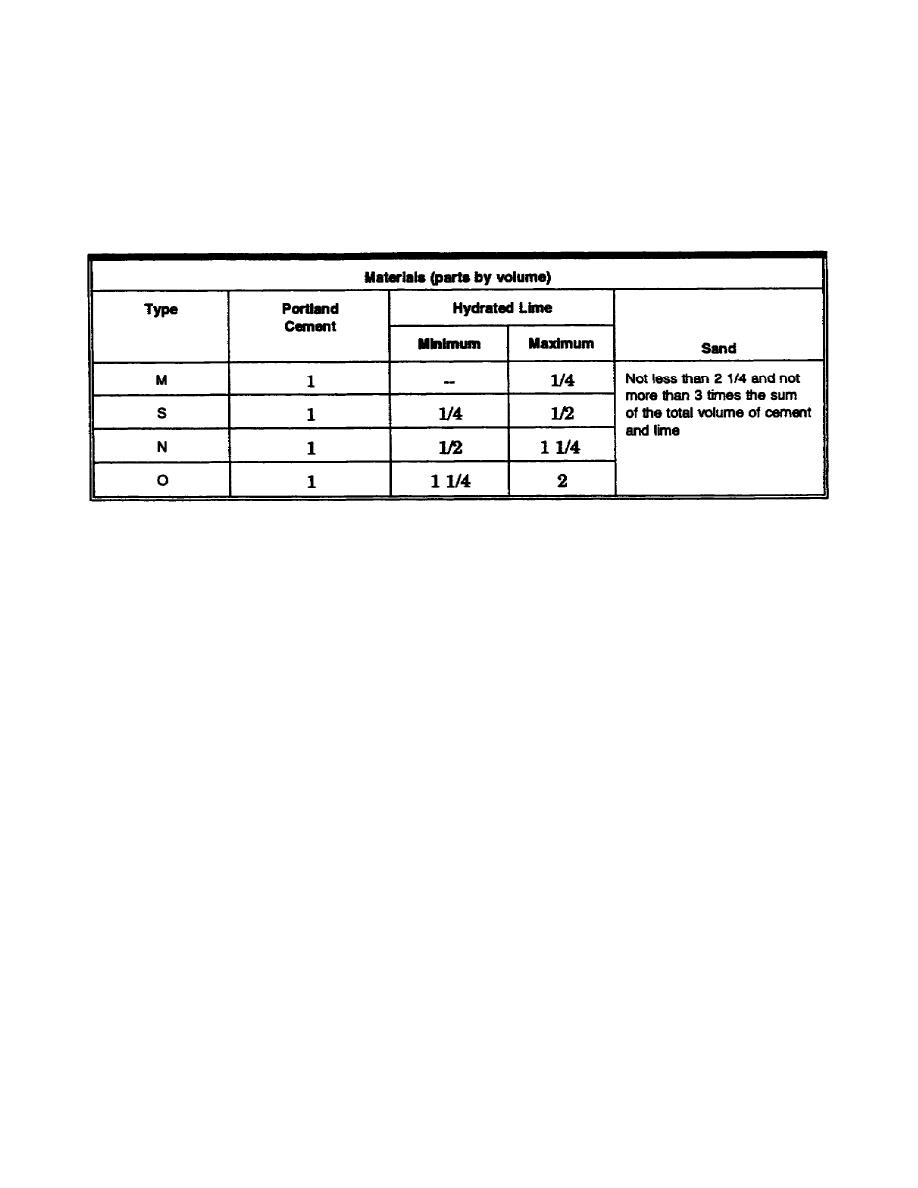
PART C - MORTAR FORMULAS
Formulas allow for variations of proportions within the types of mortar. The volume of sand should
never exceed three times the combined volume of cement and lime. If you use too much sand, the
mortar will be weaker and less workable. Most building codes and specifications call for ASTM mortar
types M, S, N, or O (Table 1-1).
Table 1-1. Proportions of mortar types
1-11. Type M. Type M mortar is composed of 1 part cement, 1/4 part lime, and 3 3/4 parts sand. This
mortar has a high cement-to-lime proportion that makes for a very strong mortar. This type of mortar is
suitable for general use. It is recommended specifically for structures that are below grade and in
contact with the earth, such as foundation, retaining walls, and walkways.
1-12. Type N. Type N mortar is composed of 1 part cement, 1 1/4 parts lime, and 6 3/4 parts sand.
Type N has excellent workability because of its high lime content. It does not have the strength of Type
M or Type S mortar. Type N-
May be used in bearing walls that are above grade if stress is not too great.
Is widely used in veneers.
Is used in partitions and some exterior walls where climatic conditions are negligible.
1-13. Type O. Type O mortar is composed of 1 part cement, 2 parts lime, and 9 parts sand. It is
extremely plastic and workable (notice the lime content) but has relatively low strength.
Type O should not be used if it will be subjected to freezing and thawing in the presence
1-5
EN5157


 Previous Page
Previous Page
